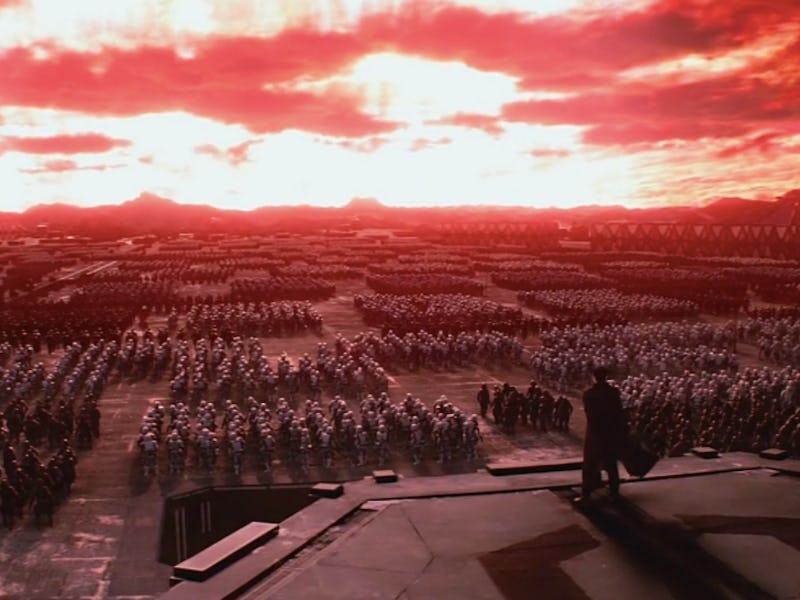New Disney Rules Mean Watching 'The Last Jedi' Is Nearly Mandatory
Don't even try to watch something else this December.

If you live in a small town, with a small movie theater, and you don’t feel like watching The Las Jedi from December through January, too bad. Disney’s new regulations require any movie theater showing the latest Star Wars movie to play it in their largest auditorium, for four weeks, no exceptions.
On Wednesday, The Wall Street Journal reported on Disney’s “unprecedented power,” in terms of how much control it exerts and profit it receives from movie theaters alone. Perhaps unsurprisingly, the article demonstrates that Disney’s market share of box office dollars has risen from about 10 percent in 2011 to over 25 percent in 2016. And in contrast with other studios, Disney doesn’t release near as many films, meaning the ones they do put out — like Marvel and Star Wars movies — are packing a much bigger punch.
So, what’s the big deal? Star Wars is awesome and so are Marvel movies. Is it a bad thing that the company that distributes both of them has such direct control over movie theaters in general? If we’re talking about big cities, and multiplexes, this probably doesn’t change much for the average person. But, if it’s a small town movie theater, The Last Jedi could actually hurt the business overall. Maybe The Last Jedi has a great opening weekend in that small town, but they want to make way for a different movie a week later. Well, if such a theater decides not to keep The Last Jedi in its biggest auditorium for the full four weeks, Disney will hit them with an additional 5 percent profit share on ticket sales, which is on top of the 65 percent they’re already getting. Basically, Disney is behaving like the Empire or The First Order. If you don’t like want to play by their rules, they will destroy you.
George Lucas shot 2002's 'Star Wars: Episode II -- Attack of the Clones' entirely on a digital "film" camera.
Still, one could argue that the insistence of keeping The Last Jedi on a big screen isn’t just about money, but, instead, quality control. The Star Wars tradition of holding movie theaters to a variety of visual and sound standards stretches back to George Lucas. In 2002, Lucas even tried to require movie theaters to show Attack of the Clones exclusively on digital projectors, an experiment which wasn’t entirely successful. And then, there’s the famous Stanley Kubrick introduction to 2001: A Space Odyssey in which the director implored moviegoers to complain to the theater owners if the presentation of the film was off. This eccentric introduction didn’t make it into the wider release of 2001, but it’s an interesting precedent.
In a way, if Disney is insisting on the larger screens to protect the artistic merits of the film, it’s a level of quality control Lucas, or even Stanley Kubrick weren’t capable of in previous decades. There’s not a single Star Wars fan in the world who would say they don’t care about the visual and sound quality of a Star Wars movie because those elements are arguably just as important as the story itself.
Still, if you want to go to a movie theater anywhere in the United States between December 15 2017 and January 5 2018, you’re probably going to see The Last Jedi. And that’s an order.
Read Next: Why Luke Skywalker’s Ancient Book in The Last Jedi is Such a Big Deal
If you liked this article, check out this video of an insane Last Jedi theory that connects Snoke to Anakin Skywalker.